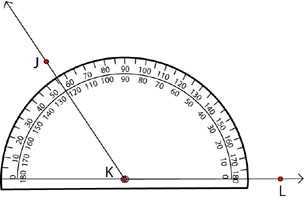 username@email.com
username@email.com
In this lesson you will learn to perform a variety of computations involving basic geometric figures and their parts.
A coordinate plane is formed by two perpendicular number lines that intersect at their points of origin.
The location of any point in the coordinate plane is given by an ordered pair of the form (x,y). It’s called ordered, because the order matters: the first value in the pair is the x-coordinate of the point and the second value is the y-coordinate.
The figure below shows a square in the coordinate plane.

Coordinate Plane
But how can we be sure it’s a square? Well, we must consider what we know about squares.
Let’s check each of these to confirm that ABCD is a square. Clearly, it has four sides but are the opposite sides parallel? Sides AB and CD have the same steepness, so they’re parallel. In fact, they’re also parallel to the x-axis. Sides BC and AD also have the same steepness, so they’re parallel, as well. And they’re parallel to the y-axis. Thus, quadrilateral ABCD is a parallelogram.
The opposite angles of a parallelogram are always congruent, so now we only need to check if angles DAB and ABC are right angles. We know that perpendicular lines form right angles, so if side AD is perpendicular to side AB, and if side AB is perpendicular to side BC, then all of the angles must be right angles. We can check this using a protractor to measure the angles.
Here’s a close-up of angle DAB and the protractor with which we’ll measure it.

Protractor
To measure the angle:
Find the center hole on the straight edge of the protractor. Place the hole over the vertex of the angle.
If the side of the angle were aligned with the left side of the straight edge of the protractor, you would have read the measure of the angle from the outside scale.
This angle measures 90°, so it is indeed a right angle. We could repeat this process to measure angle ABC to find out that it is a right angle, too.
What is the measure in degrees of angle JKL?

Choice C is the correct answer. Since the side of the angle is aligned with the right side of the straight edge, use the inside scale to read the angle’s measure in degrees. The measures increase counterclockwise, so the angle’s measure is between 120° and 130°. The measure of the angle is 125°.

Coordinate Plane
Now we can continue to verify that parallelogram ABCD above is a square. So far we know:
All we need to do now is measure the lengths of the sides. The opposite sides of a parallelogram are congruent, so all we need to do is measure two adjacent sides.
We’ll measure the lengths of AB and BC. The length of a horizontal line segment equals the difference between the x-coordinates. The endpoints of AB are A (–1, 3) and B (3, 3), so the difference between the x-coordinates is 3 – (–1), or 4. Distance must be positive, so if we had found the difference to be –1 – (3), or –4, we would still call the distance 4. So AB = 4. Thus, CD is also equal to 4.
The length of a vertical line segment equals the difference between the y-coordinates. The endpoints of BC are B (3, 3) and C (3, –1), so the difference between the y-coordinates is –1 – (3), or –4.
So BC = 4. Thus AD, is also equal to 4.
We’ve shown that all sides of ABCD have the same length, so they’re all congruent. Therefore, ABCD is a square.